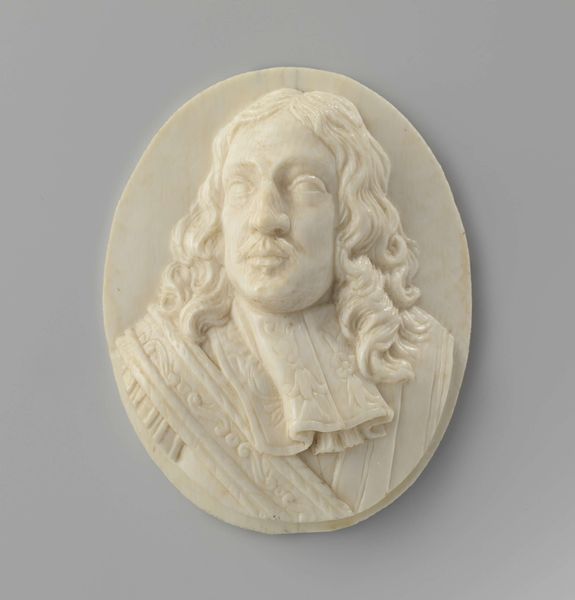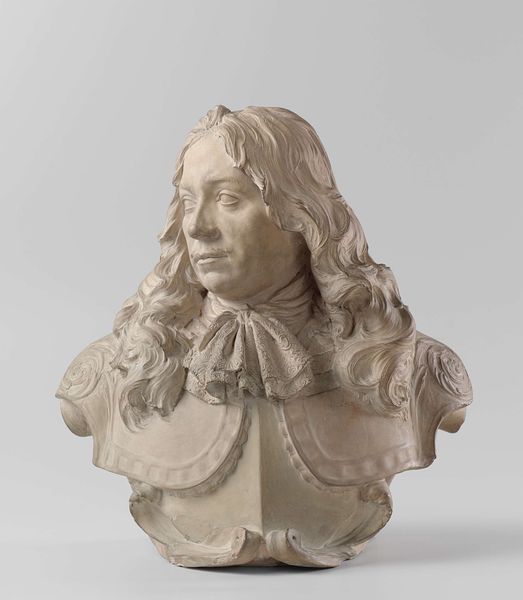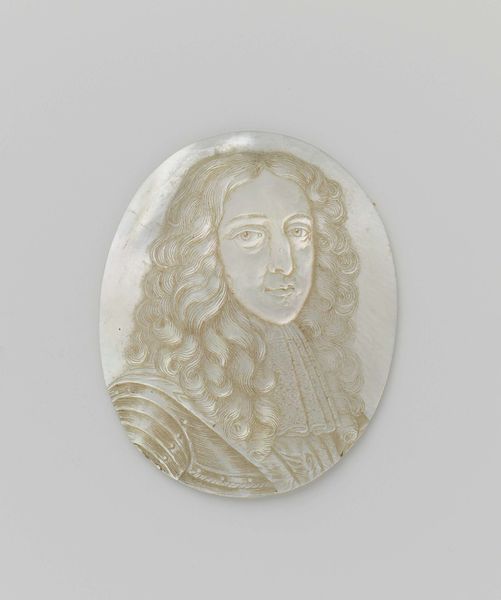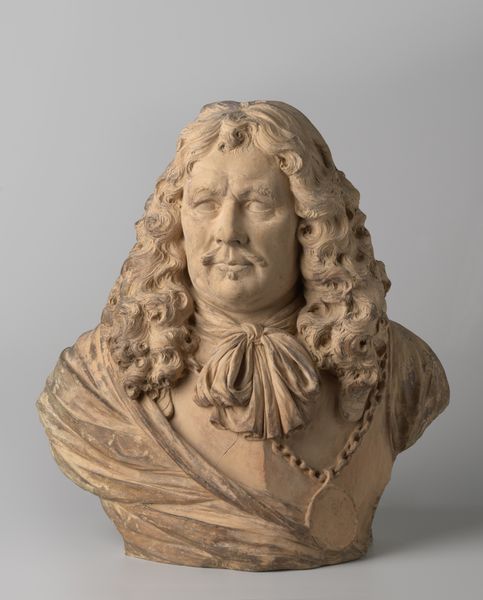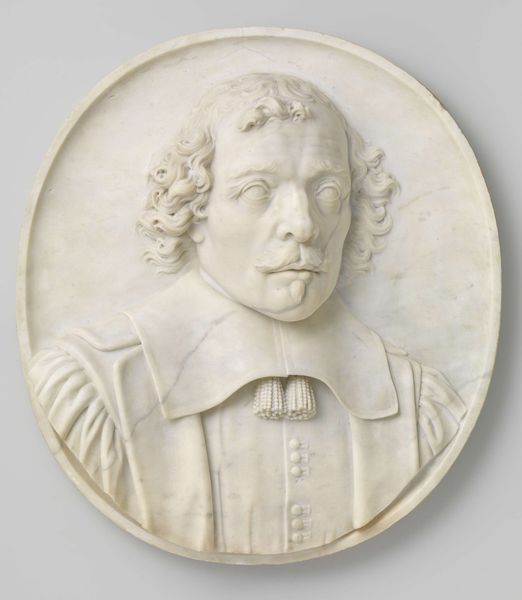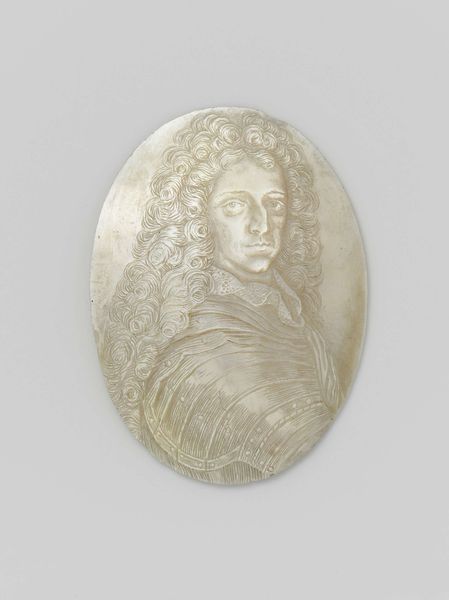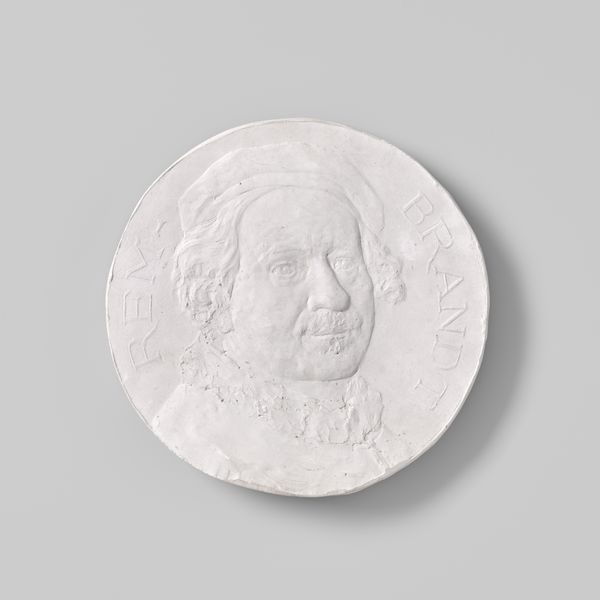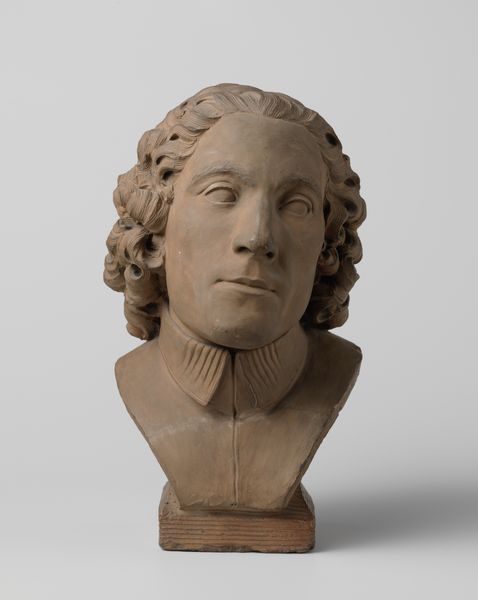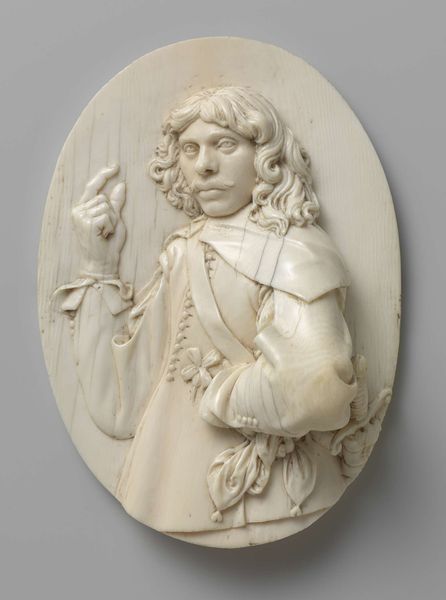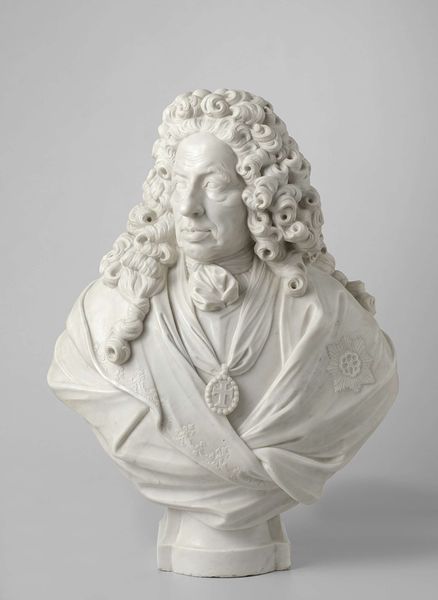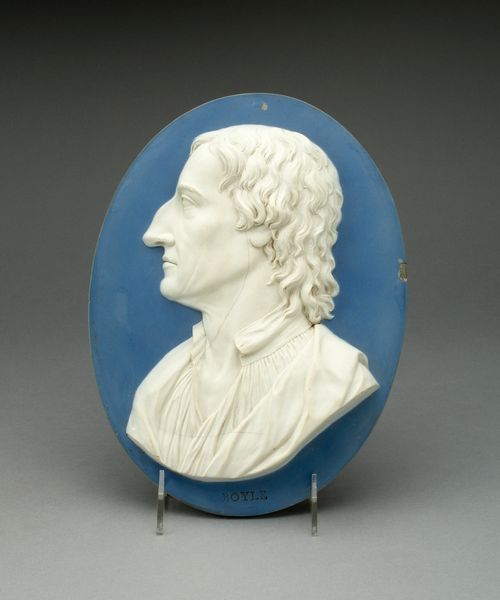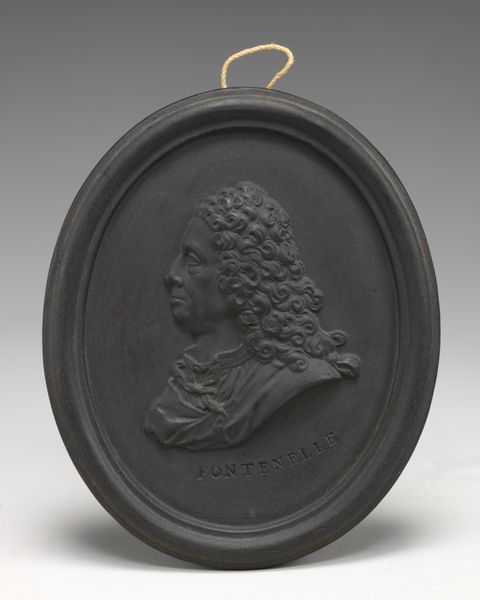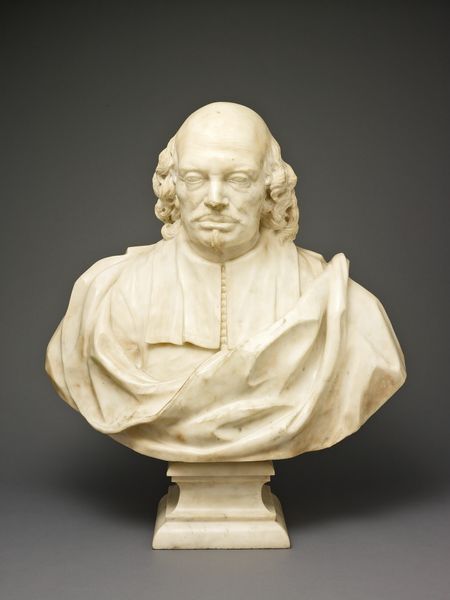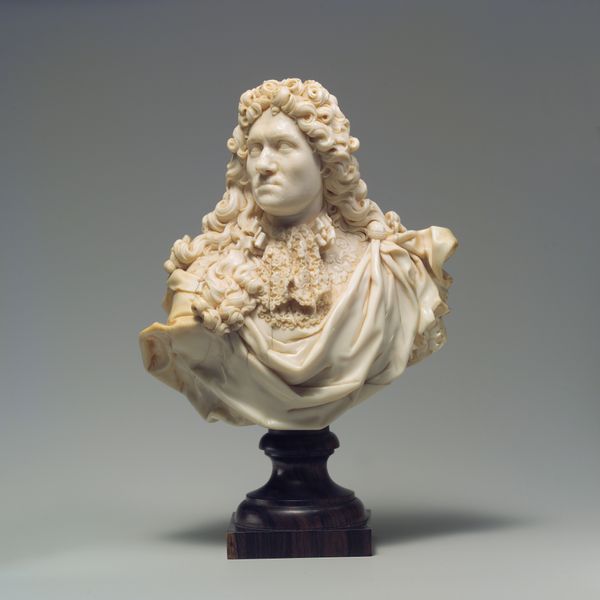
sculpture, ivory
#
portrait
#
baroque
#
sculpture
#
sculpture
#
ivory
Dimensions: height 10.5 cm, width 8.2 cm, depth 2.7 cm
Copyright: Rijks Museum: Open Domain
Curator: I’m immediately struck by its ghostly pallor. Is this supposed to be commemorative? It has a solemn, almost mournful presence. Editor: It certainly does. What we're looking at here is a Portrait Medallion of Johan de Witt, dating from around 1735-1750, currently held at the Rijksmuseum. It's rendered in ivory. De Witt, for those unfamiliar, was a key figure in Dutch politics during the 17th century. Curator: Ivory, interesting. So not marble, then. That creamy, almost translucent quality enhances that ethereal feel I was sensing. Ivory always carries such weight, doesn't it? Historically linked to trade, colonialism… it speaks to power, prestige, but also exploitation. Editor: Absolutely. Consider the skill and labor involved in carving something like this out of ivory. We're talking about someone who not only possessed exceptional carving skills, but also had access to this coveted material. It makes me consider who commissioned it, and for what purpose? The details of the collar and coat, button after button. Someone really put great detail into the craft here. Curator: The symbolic weight is fascinating. The oval form is classical. The Baroque style, full of dynamism despite the stillness of portraiture... Johan de Witt himself was a controversial figure, eventually murdered. Is this a veneration, or an attempt to fix a legacy, reshape it after such a violent end? Editor: And an interesting contrast in the material and the politics: the preciousness of the ivory versus de Witt’s focus on trade and statecraft. I’d like to learn more about how ivory carving workshops functioned during this period, their supply chains, and who precisely was benefiting from the production of these objects. The process by which that tusk becomes *this*. Curator: Indeed. There's a ghostliness not just in the color, but in the afterlife of symbols themselves, how their meanings shift and accrue over time, even centuries after the sitter is gone. This ivory becomes not just Johan de Witt, but an index of memory and making too. Editor: Well said. Looking closely at the construction and thinking about its original context certainly invites us to consider its multilayered stories: of material extraction, artisanry, legacy, and political power.
Comments
No comments
Be the first to comment and join the conversation on the ultimate creative platform.
